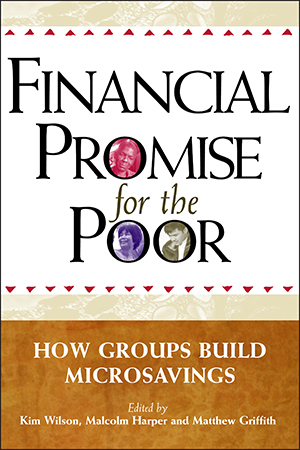Development scholars, policymakers, and practitioners have begun sorting through the hype of microfinance to identify where and how top-down loans might fit into broader development efforts. To many, the answer involves shifting focus to another financial service: savings. Serving as a strong and perhaps more effective tool than microcredit, microsavings is quickly becoming a lauded poverty-alleviation tool.
The authors of Financial Promise for the Poor cover current innovations in microsavings around the world, describing how savings-group members are avoiding many of the financial liabilities of other microfinance programs while gaining skills and finding opportunities in collective enterprise.
Kim Wilson teaches at the Fletcher School, Tufts University, and is also a fellow at the university's Center for Emerging Market Enterprises and Feinstein International Center. Malcolm Harper is professor emeritus at Cranfield University's School of Management. Matthew Griffith is an independent consultant focusing on community finance and livelihoods.
"A useful overview of the current state of practice in an expanding field of approaches that is promoting the savings-led model."—Enterprise Development and Microfinance
"Savings groups are the core engine of financial assets for the poor, and this book gives us a rare view of them that cuts across geography, structures, and degrees of institutionalization. It provides an honest view of savings groups—what they are and what they are not—and thus offers readers a perspective of how these important mechanisms fit within the financial lives of the poor."—Daryl Collins, Bankable Frontier Associates
"Rich in interesting examples of both traditional and NGO facilitated savings groups.... The editors remind us that there is no magic bullet to resolving poverty, and that we as practitioners must remain sober about our role and the effects of our interventions. A most welcome contribution to the field!"—Moira Eknes, CARE Norway
"Microfinance started with a common vision to improve economic opportunity for the poor, but that vision has become blurred in recent years.... This book takes a refreshing look at how local systems of savings and lending, though extremely simple, bring the industry back on track."—Chuck Waterfield, MFTransparency








